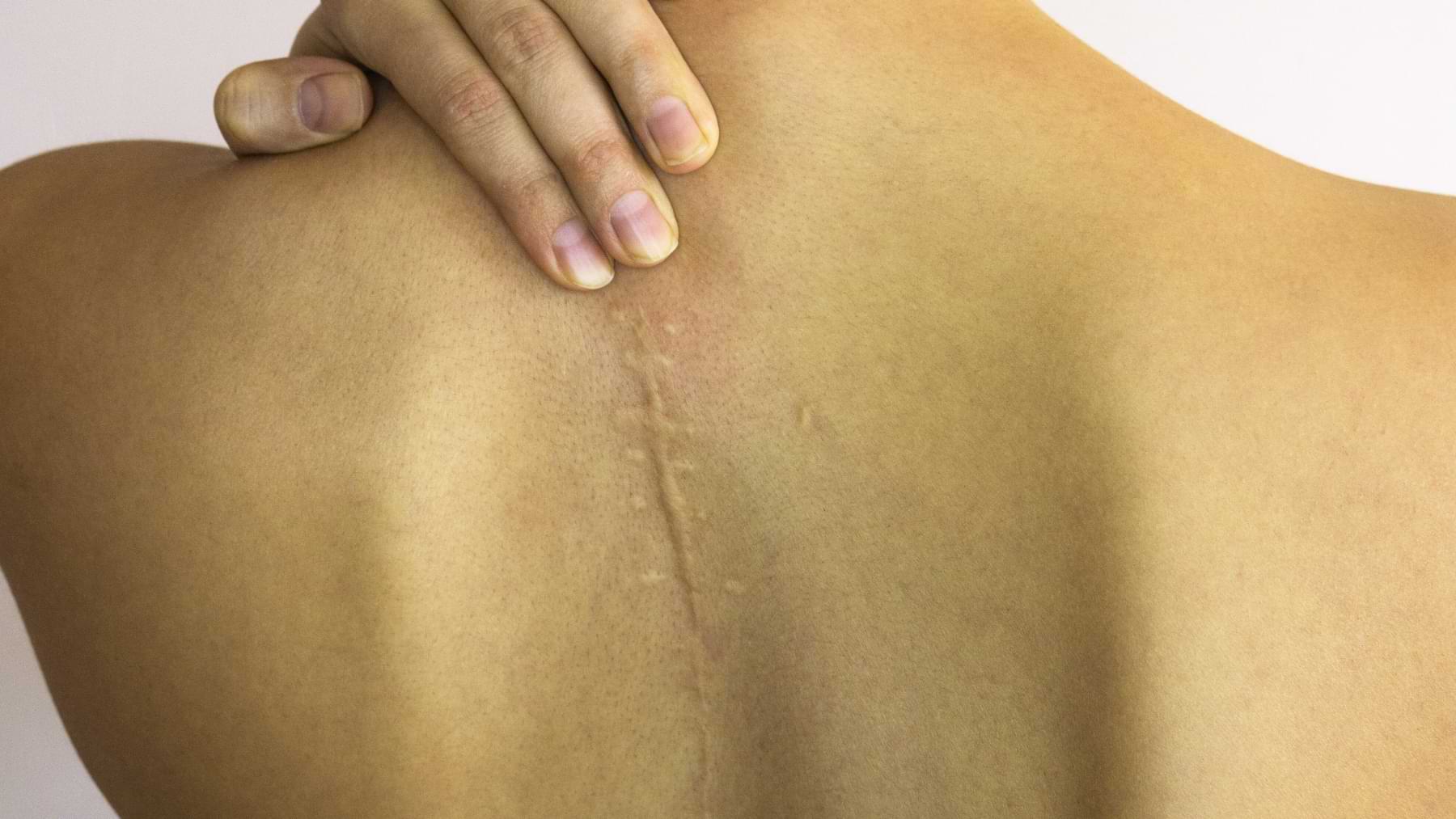What are the main types of scars?
Scars form for many reasons — accidents, surgery, burns, acne, infections, inflammation, or even rapid skin stretching. But not all scars are the same.
They can appear anywhere on the body and may look flat, raised, sunken, or discoloured. Some scars feel itchy or tight, while others fade without issue. The way a scar develops depends on several factors, including:
- Skin type and ethnicity
- Severity and location of the wound
- Direction of the injury
- Age and overall health
Below are some of the most common types of scars:

What is a normal scar?
A normal scar follows the natural healing process:
- It starts as a raised line and gradually fades and flattens over time.
- It may feel slightly itchy for a few months but is not usually painful.
- Healing can take up to two years, with most scars settling within seven months.
Scars never completely disappear, but with the right care, they often become far less noticeable.
What are the signs of a possible problem scar?
Some scars don’t heal as expected. If a scar is still red, purple, raised, or causing discomfort after three months, it may require extra care.
A scar could be problematic if it:
- Remains red or purple (not due to sun exposure)
- Is raised, thick, or itchy
- Extends beyond the original wound
- Feels hard or tight
- Restricts movement, especially near a joint
Keloid Scars
Keloid scars form when the body produces too much collagen, causing an overgrowth of tissue that extends beyond the original wound.
Appearance:
- Raised above the skin—may be pink, red, or darker than the surrounding skin
- Can feel itchy, painful, or tender
- May continue to grow indefinitely, even after the wound has healed
Timeline: Usually appears three months or later and keeps growing over time.
Risk Factors:
- More common in younger people and darker skin types
- Often found on the chest, back, shoulders, neck, and ears
Treatment can be challenging, and keloids have a high recurrence rate. If you're prone to keloid scars, it's best to take early preventative measures.
Hypertrophic Scars
Like keloid scars, hypertrophic scars form due to excess collagen—but they stay within the original wound boundary.
Appearance:
- Thick, firm, and raised but usually red rather than purple
- May feel itchy but is rarely painful
Timeline: Appears within weeks of healing and may continue to thicken for up to six months.
Risk Factors:
- More common in younger people and darker skin types
- May have a genetic tendency
Hypertrophic scars often improve over time and typically respond better to treatment than keloid scars.
Stretched Scars
Stretched scars occur when the skin is under tension while healing, preventing the scar from closing neatly.
Appearance:
- Starts off normal, but over weeks or months, widens and thins
- Often found near joints, where movement puts pressure on healing skin
Risk Factors:
- Constant movement across the scar
- Poor healing due to ill health or malnutrition
Reducing stress on a scar while it heals can help prevent stretching.
Stretch Marks
Stretch marks are a type of scar that occurs when the skin stretches or shrinks rapidly, leading to collagen breakdown.
Appearance:
- Start as red or purple streaks
- Gradually fade to white or silvery lines
Common Causes:
- Pregnancy
- Rapid weight gain or loss
- Large-volume breast implants
Stretch marks rarely disappear completely, but they often become less visible over time.
> To learn more about treatments for problem scars, please read Snippet #4: Treating Your Scar.
The Nokori Team



Share:
Bioactives → Aloe Vera
Bioactives → BioFusion©